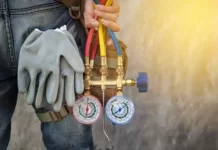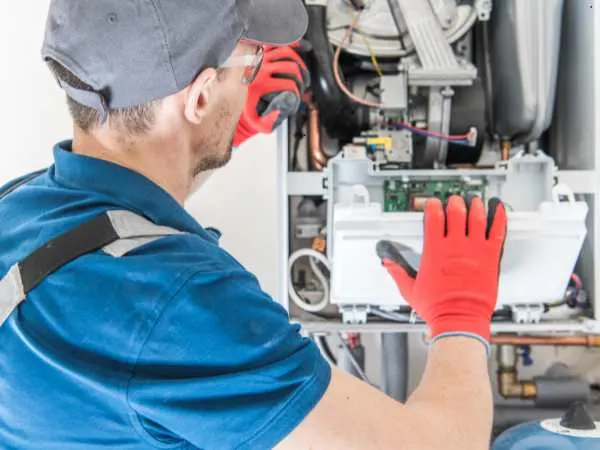There’s something special about sitting by a warm fire on a cold night. Wood heaters, also called wood stoves, have become popular in many homes for their cozy heat, classic look, and ability to cut heating bills. But if you’re thinking about installing a wood heater, you might have questions. How do you do it safely? What should you expect? Is it a good DIY project, or should you call a pro? Let’s walk through everything you need to know in easy steps.
Why Install a Wood Heater?
Before we get into the “how,” let’s talk about the “why.” A wood heater gives your home steady warmth and can save money compared to gas or electric heat. Wood is a renewable resource, and for some families, cutting and stacking wood is a yearly tradition. A lot of people enjoy the warm crackle and soft glow of a wood fire.
Planning for Wood Heater Installation
Step one: Check your local rules.
Cities and towns often have building codes about wood heater installation. These rules are for safety. You may need a permit. Some places have rules about which wood stoves you can use to help keep the air cleaner.
Call your local building office or look online for your city’s rules. It’s better to ask first than fix a mistake later.
Step two: Pick the right wood heater.
There are many types and sizes. Think about the room size, how much heat you need, and where you want to put it. Modern heaters burn cleaner and use less wood. If you’re not sure, visit a local shop or talk to an installer for advice.
Where Should the Wood Heater Go?
The spot you choose is very important. Most people put wood heaters in living rooms or family spaces. Pick a place with plenty of space, away from curtains and furniture. The heater must sit on a fireproof base, like tile or stone.
Think about how you’ll bring in wood, and where the chimney or flue will go. The closer the heater is to the center of your home, the more evenly it will heat your space.
Tools and Supplies You Might Need
- Wood heater/stove
- Flue kit (the chimney pipe)
- Fireproof base (hearth pad)
- Wall thimble (for safe pipe pass-through)
- Ceiling support box (if going through a ceiling)
- Heat shields (if close to walls)
- Tape measure
- Level
- Drill and saw (for making holes)
- High-temperature sealant
Some tools are for pros, but handy homeowners can do many steps. Always read your heater’s manual before you start.
also read : – Cast of The Perfect Couple: A Complete Guide to the Star-Studded Netflix Series
Step-by-Step Wood Heater Installation
1. Prepare the Space
Clear out rugs, furniture, or anything that could catch fire. Clean the floor. Lay out your hearth pad where the heater will sit. Make sure the pad is bigger than the base of the stove, with extra space in front—usually at least 18 inches.
2. Set the Heater
Put the wood heater on the hearth pad. Double-check it’s level and stable. Mark where the flue (chimney pipe) will go up and out. Most heaters need the flue to go straight up for the best draft.
3. Install the Flue
This part can be tricky, so don’t rush.
- Measure the distance from the heater to the ceiling.
- Use the flue kit instructions to cut a hole in the ceiling (or wall) for the pipe.
- If the pipe goes through a wall, install a wall thimble for fire safety.
- If it goes through the roof, install a ceiling support box and flashing to keep water out.
The flue pipe sections should fit tightly together. Use high-temp sealant where the instructions say. Double-wall pipe is safer for inside the house, while single-wall pipe can go outside.
4. Attach Heat Shields if Needed
If your heater sits close to walls, you may need a heat shield to protect them. Metal or special fireboard work well.
5. Connect the Chimney
The chimney goes up past the roofline. Most codes say it should be at least three feet above the roof, and two feet higher than anything within ten feet. This helps smoke flow out and keeps sparks away from the roof.
Put a rain cap on top of the chimney to keep water and birds out.
6. Check for Air Gaps and Safety
Go over your work. Check for air leaks, loose connections, or wobbly parts. Smoke leaks inside can be dangerous. If anything feels unsure, call a pro to look it over.
7. First Fire (Test Burn)
Before you light a big fire, do a test burn with a little kindling and a small log. Open windows for fresh air the first time—the heater’s paint and parts may smell as they heat up for the first time.
Safety Tips for Wood Heater Installation
- Always follow the manual. Every heater is a little different.
- Keep a fire extinguisher nearby. It’s just good sense.
- Don’t use flammable materials. Only use high-temp sealant and proper pipes.
- Have smoke and carbon monoxide alarms. Test them before you start using the heater.
- Schedule a professional check. Many people call a chimney sweep or installer for a safety review, even after DIY installation.
- Clean the flue regularly. Ash and soot build up and can cause chimney fires.
I still remember my first chimney cleaning—I was surprised how much soot was in there after one season!
Can You Install a Wood Heater Yourself?
If you have experience with home projects and follow safety steps, you might install a wood heater yourself. But if you are unsure at any step, call a professional. The cost of a safe, warm home is always worth it.
Some people want to save money on labor. But remember, a poor install can lead to fires, smoke in the house, or even carbon monoxide poisoning.
How Much Does Wood Heater Installation Cost?
The total price depends on a few things:
- The heater model you pick
- Length and type of flue (chimney)
- If you do it yourself or hire a pro
A simple DIY installation can cost as little as $1,000 (for a small stove and basic flue kit). Professional installs, especially for larger heaters or tough roof lines, can run from $2,000 to $5,000 or more.
Always budget for safety—don’t skimp on the chimney or heat shields. Some insurance companies will ask for proof that your heater was installed correctly.
Common Mistakes to Avoid
- Using the wrong type of pipe
- Putting the heater too close to walls or furniture
- Skipping the hearth pad
- Not sealing chimney joints
- Forgetting smoke or CO alarms
- Not checking local rules
If you’re not sure about any part of the process, it’s okay to ask for help. There are online videos, manuals, and local experts who can walk you through tricky steps.
How to Keep Your Wood Heater Working Well
- Burn dry, seasoned wood only (no painted or treated lumber).
- Clean out ashes often, but leave a thin layer to help new fires start.
- Inspect and clean your chimney every year.
- Watch for smoke inside—this can mean a problem with the draft or a blocked chimney.
People-First Advice: Is a Wood Heater Right for You?
Wood heaters work best in homes where someone can feed the fire every few hours. If you’re gone all day or travel often, think about other options. They need regular cleaning, and you’ll have to stack wood every fall.
For families who want a backup for electric or gas heat, wood heaters are a smart choice. Some people like the work of splitting wood and keeping a fire going. Others just want to turn a dial. Only you know what works for your lifestyle.
I grew up in a house with a wood stove. Some of my best memories are helping my dad stack firewood or sitting by the heater on a snowy day. It’s more than just heat—it’s a feeling of comfort and home.
also read : – How to Play Minecraft on Now.gg: A Step-by-Step Guide
Frequently Asked Questions
Do I need a permit to install a wood heater?
Usually yes. Check with your local city or county office before you start.
How much space do I need around my wood heater?
Most stoves need at least 36 inches of space from walls and furniture, but always follow your manual and local codes.
Can I put a wood heater in a mobile home?
Only some models are safe for mobile homes. Check for certification and follow special rules.
How often should I clean the chimney?
At least once a year, or more if you use the heater every day.
What kind of wood is best?
Hardwoods like oak, maple, or ash burn best and give off steady heat.
Final Thoughts
Installing a wood heater takes planning, the right tools, and a careful approach to safety. For many families, the rewards—warmth, savings, and a cozy living space—are worth the effort. If you follow these steps, ask questions, and double-check every part of the install, you can enjoy safe, reliable heat all winter long.























